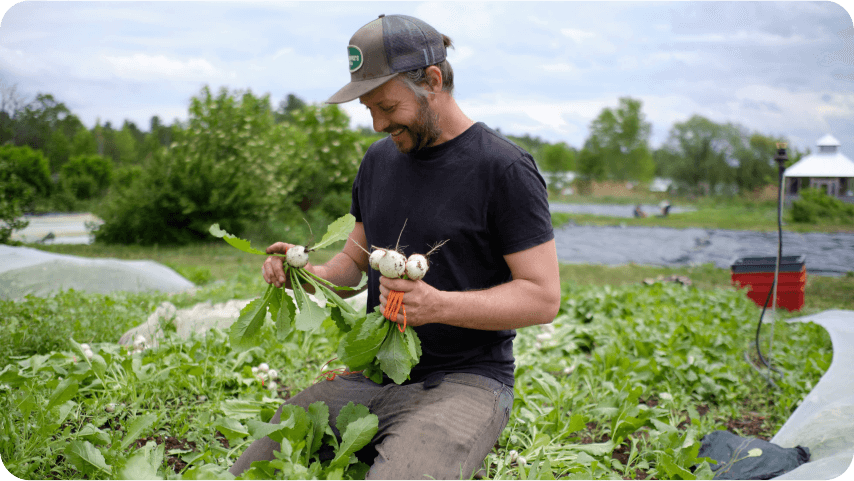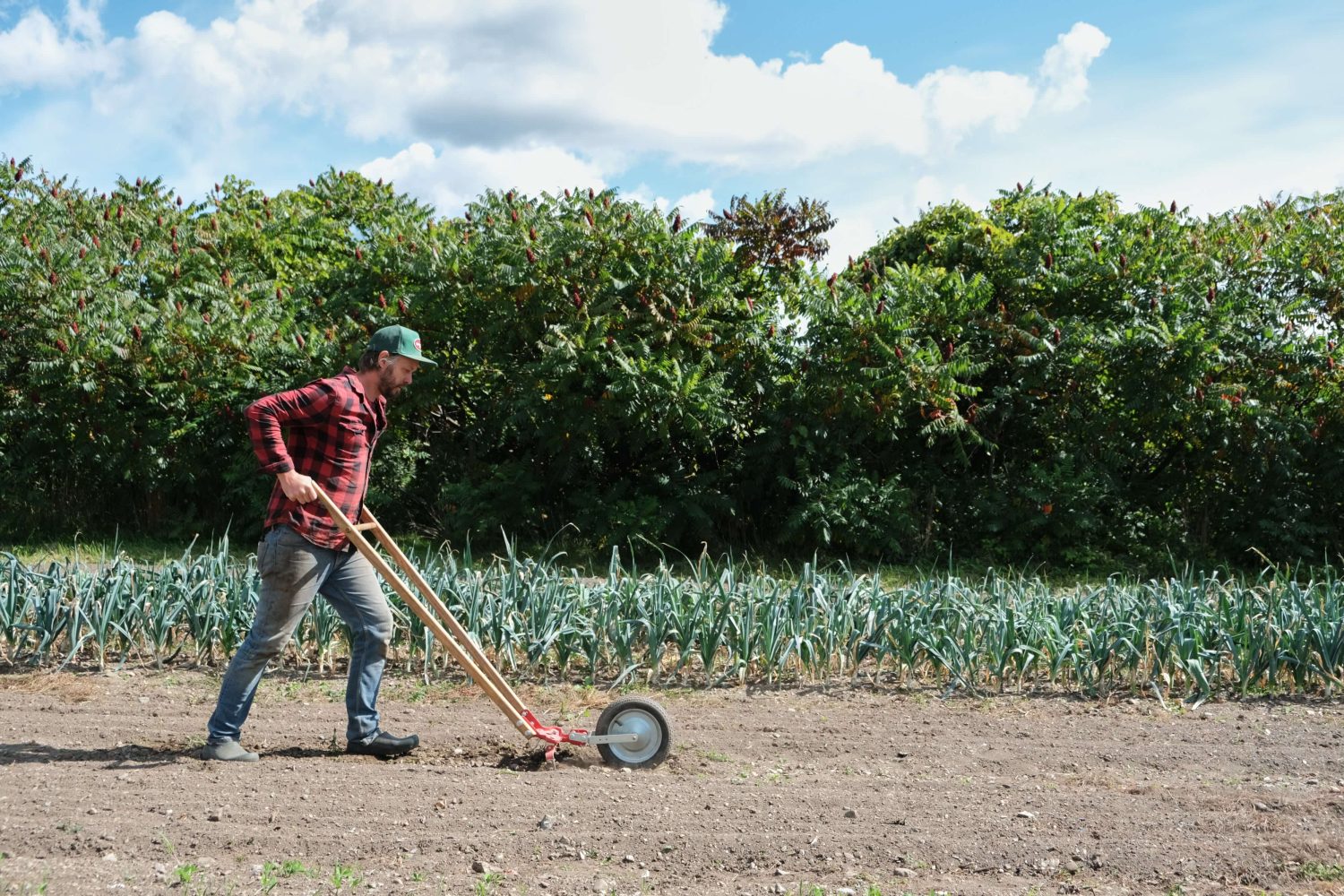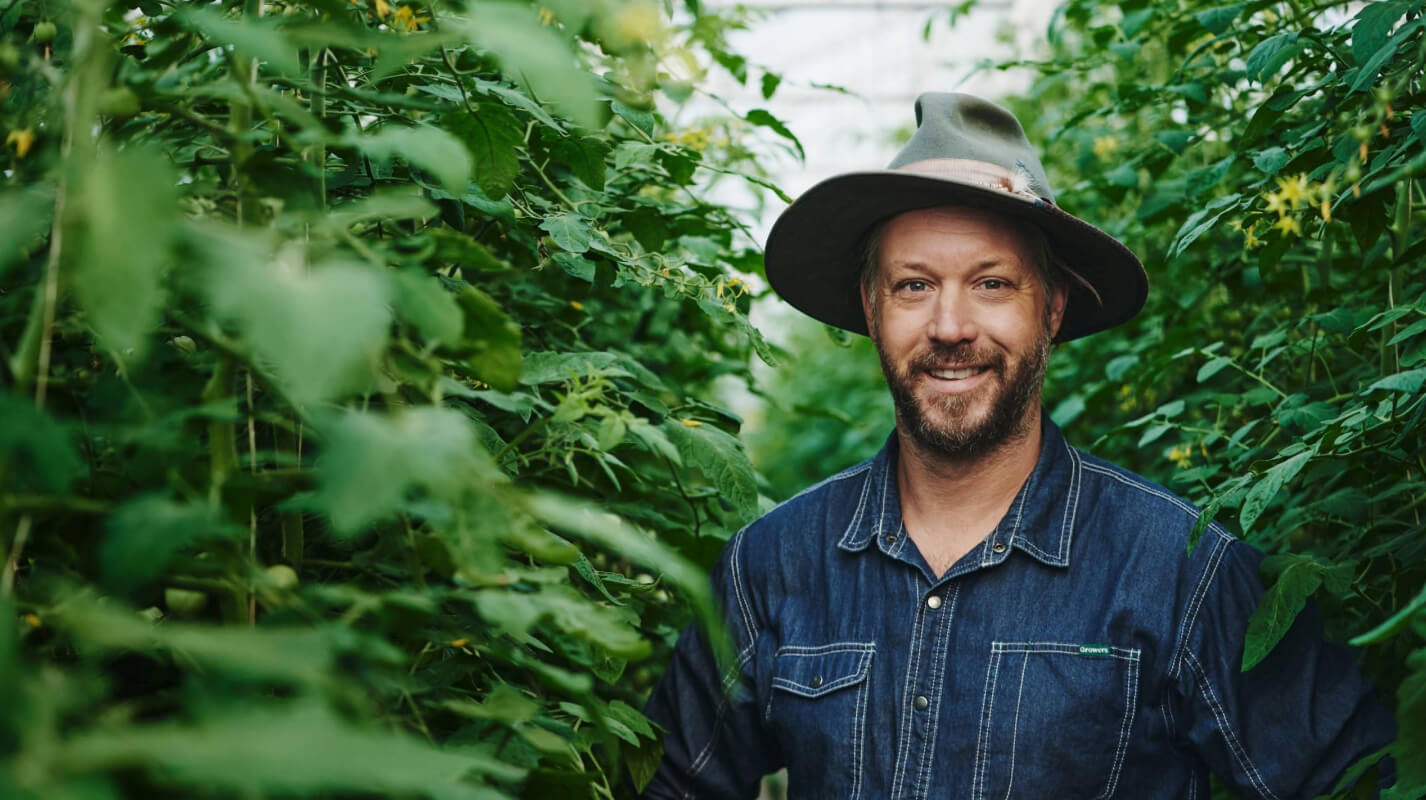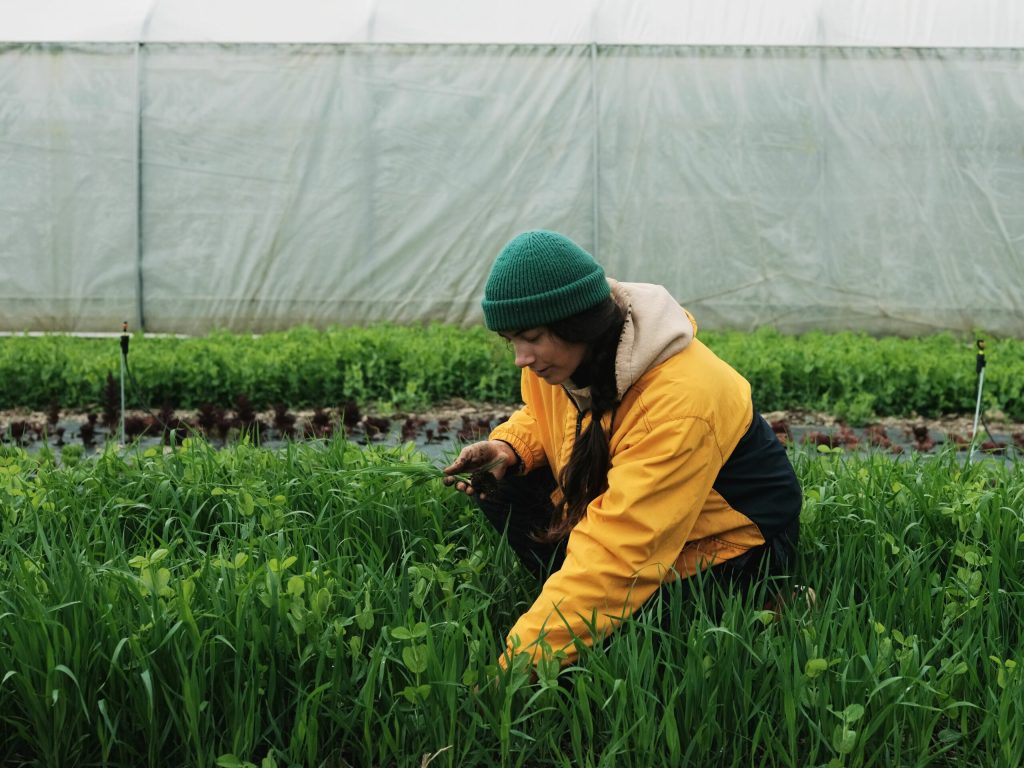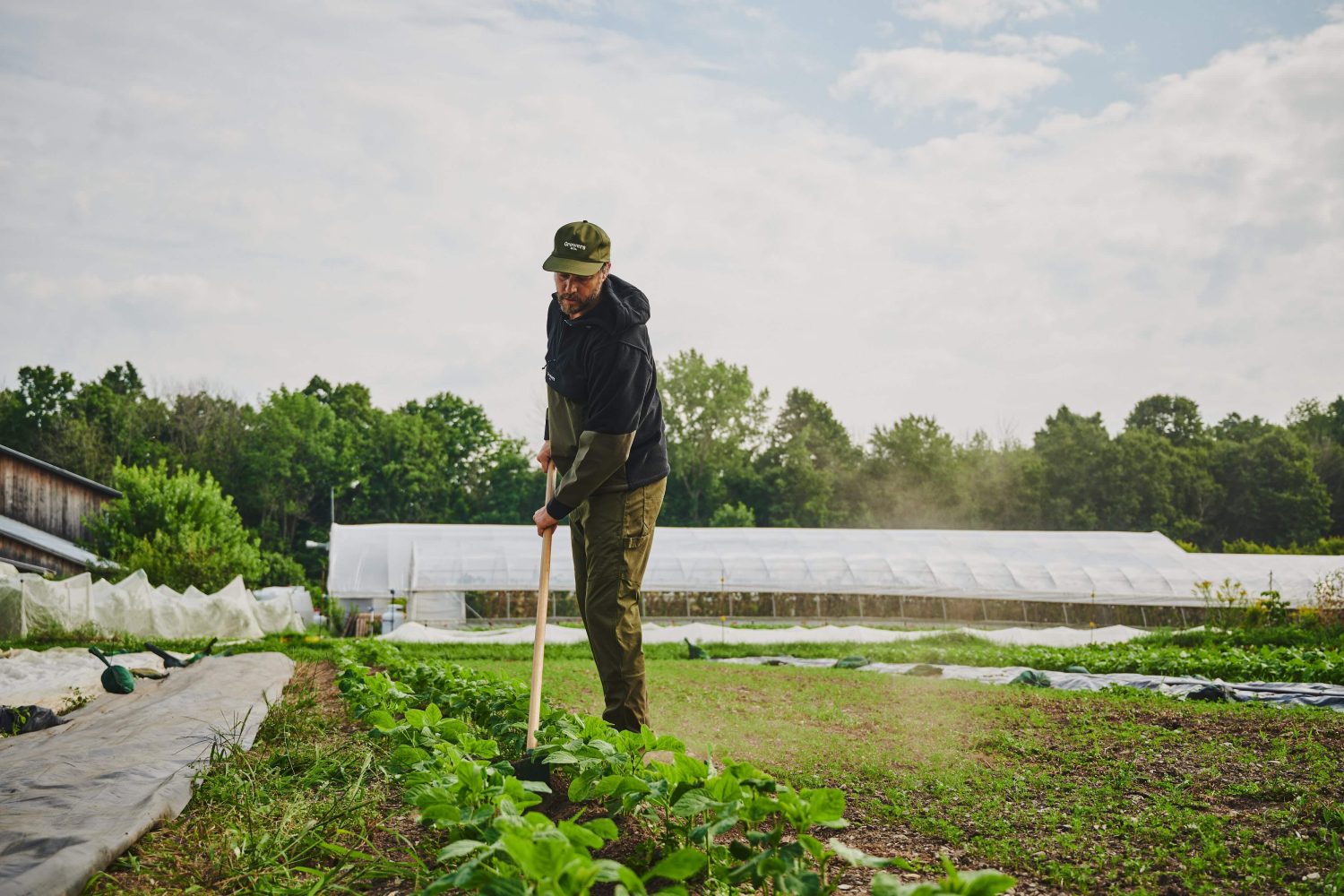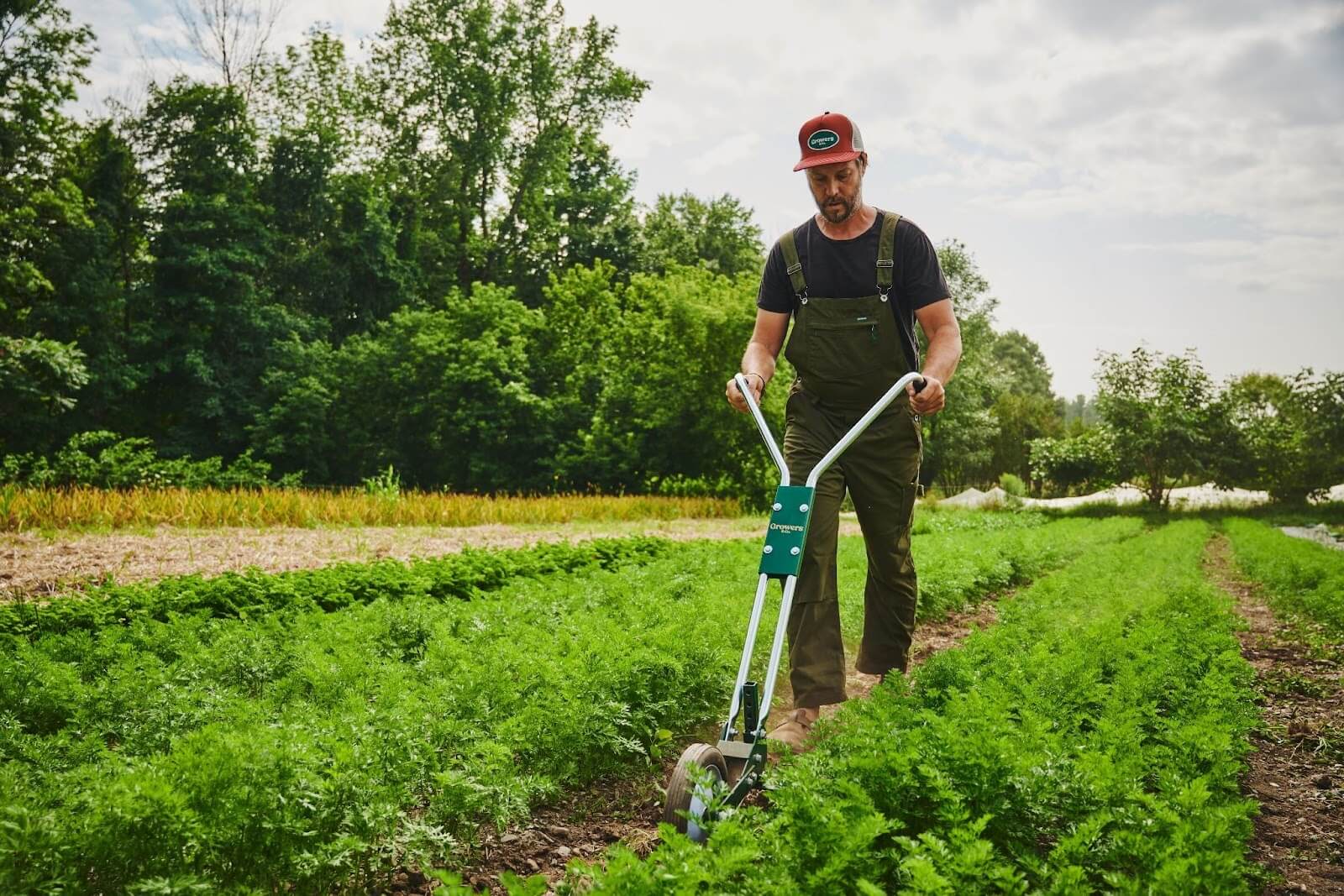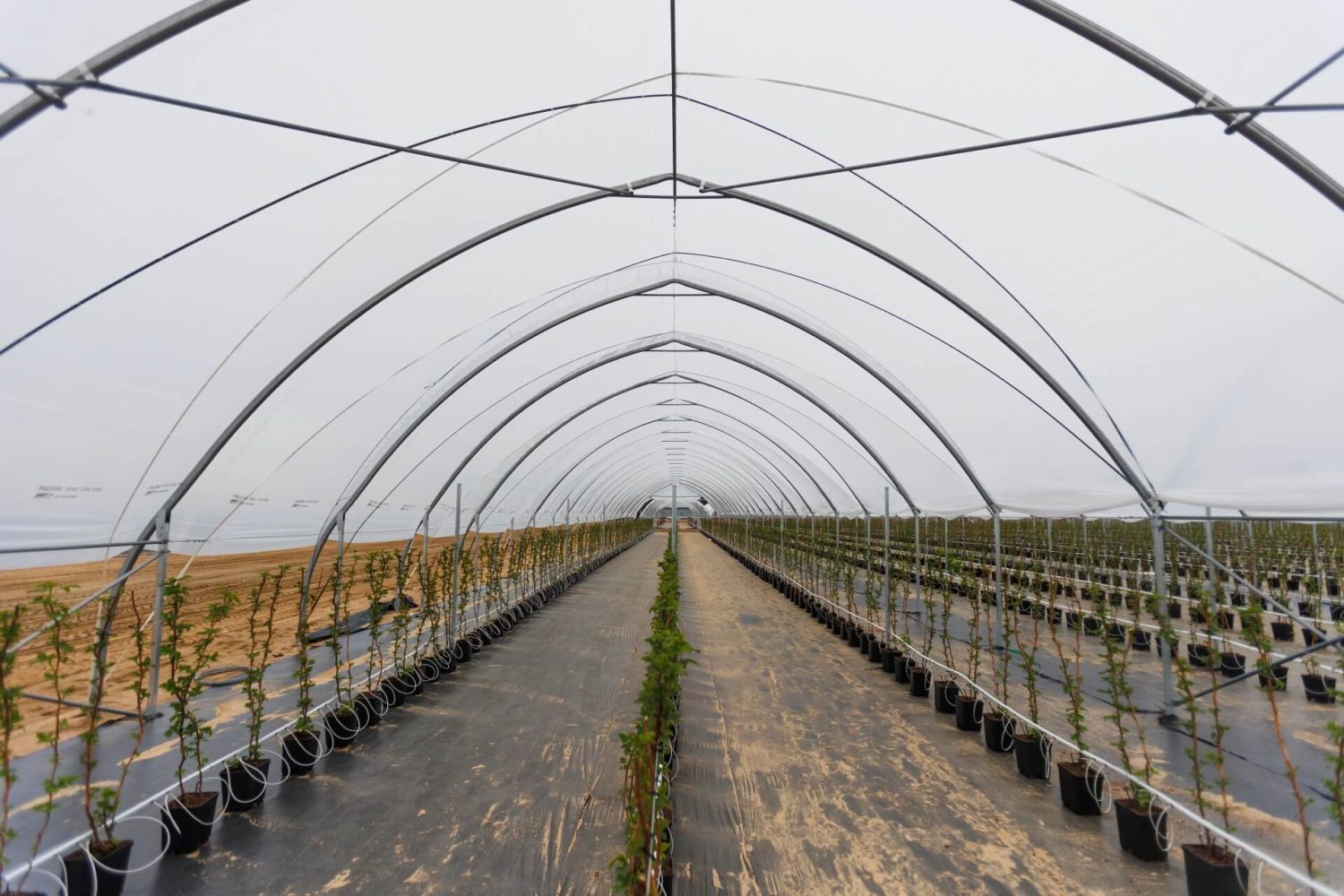A cover crop, also called “green manure” is a crop that is not planted with the purpose of bringing in an income. It is an excellent technique to improve soil health. What’s great about cover crops is that they touch on all the principles of living soil market gardening. Let’s take a closer look at why.
Structure and Stabilize the Soil
Cover crop mixes are always composed of at least one deep-rooting variety. By penetrating the soil deeply, they loosen it and promote the formation of aggregates and channels in the soil. This facilitates the circulation and storage of water and air, which are essential for healthy soils.
The abundant roots have the effect of stabilizing the soil. They literally hold the soil in place and limit erosion (thinning of the topsoil) and leaching (loss of nutrients to the water table). Structuring and stabilizing the soil means ensuring its long-term fertility, as it makes it more welcoming to the microorganisms that also ensure this fertility. The benefits are ecological and economic.

Cover Crops Nourish and Activate Soil Life
Cover crops nourish microorganisms, fungi, and all other soil life. They do this first through photosynthesis. A plant captures light and sucks CO2 from the air through its foliage, then by adding water to the equation, it transforms these elements into sugars. Through its roots, it will provide part of the product of photosynthesis to micro-organisms and mycorrhizal fungi that simply love it! In exchange, the soil life will make nutrients more accessible to the plant, in addition to protecting it from diseases and pests.
The plant, therefore, has a vested interest in feeding this community. It is a positive loop where help is mutually beneficial. Also, the more plants photosynthesize, the more carbon is sequestered from the air into the soil. Cover crops are particularly interesting because they are very efficient in this regard.
With their deep roots, cover crops go to the lower layers of the soil to get nutrients and accumulate them in their biomass. When the cover crop is destroyed and buried, the soil biology is activated to decompose it. The decomposition releases the nutrients contained in the cover crop and makes these nutrients soluble. This means that the next crop will benefit from this increased fertility! The rest is fixed in the form of organic matter.
Maximizing biodiversity
We can deduce from these alliances between roots and soil life that plants support a multitude of microorganisms. Each plant species supports different forms of life in the soil. Hence the importance of diversifying your cover crop recipes. Why not add one or two types of crops to a classic oat and peas mix? The possibilities are numerous!
And maximizing biodiversity does not stop at what happens in the soil. The above-ground portion of the plant also promotes biodiversity over the soil. It provides habitats for insects and small wildlife, not to mention pollinators that can feed during the short time the cover crop is in bloom.
Protecting the soil by covering it
The canopy of the cover crop is the protective element of everything we’ve just seen. The canopy protects soil microorganisms from weather and predators by creating habitats for them to survive and multiply. The foliage cover prevents wind erosion and drying out of the soil. The surface does not form a crust and water infiltration is therefore better.

Cover cropping is also an excellent alternative to late-season tarping. It provides good coverage during the off-season. Plant your cover crop beds early enough to get a good canopy before growth slows down too much. As long as you are not producing income from this soil, why not reinforce it for next season?
The challenges of green manure
The list of benefits of cover crops is long. For example, including legumes in your mixes can fix nitrogen from the air into the soil. Cover crops can also be very effective in controlling weeds, or in sanitizing the soil from certain diseases. Planting cover crops is almost always a good idea if you can do it.
However, in small-scale market gardening, the challenge is to integrate them into an already busy crop plan. Lack of time, lack of field space, and market demands can sometimes lead to the choice of planting cash crops instead of cover crops. This can make it difficult to integrate them into the crop planning. However, this does not mean that one should not strive to integrate them. There are tricks! It is a matter of planning them like the other crops, of including them in a crop rotation strategy, of having a clear technical itinerary for planting, and efficient destruction of your cover crops!
What Kind of Green Manure Should You Use?
You can use many kind of plant species as soil cover. The choice depends on the context of your production and the benefits sought. A good source of information for selecting cover crops is the SARE : Managing Cover Crops Profitably book (available free online).
In all cases, we recommended that you sow a mixture of legumes and grasses. We use a much higher seeding rate than what is indicated on the labels. The goal is to cover the surface of the bed as quickly as possible, which will prevent weeds from establishing.
We propose two classic mixes. The oat/pea mix used in the spring and summer. The fall rye/vegetable mix used in the fall as it has the ability to survive the winter and regrow in the spring, even in northern climates!
If you want to integrate cover crops to your market garden to improve your soil health, we offer a complete and comprehensive module on living soils in our Masterclass signature program. By registering to the program, we will explore this topic in greater depth and provide you with the knowledge and skills necessary to implement cover crops effectively in your market garden. Join us to explore this topic and take your market gardening to the next level!
